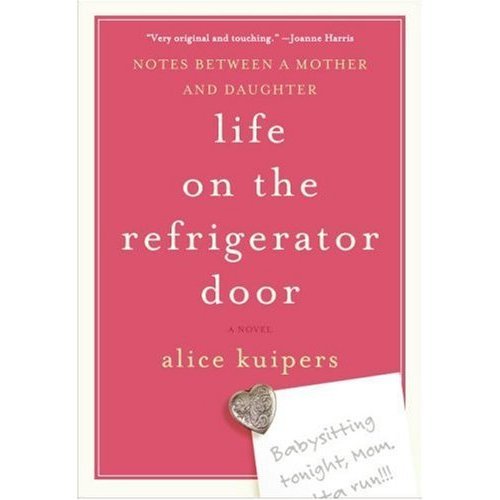By Stephen Windwalker, Editor of Kindle Nation Daily
Every few months we get a particularly strong dose of doom and gloom from a large number of the market and media pundits who follow Amazon and the Kindle, and another negative wave seems to have been cresting in the past several days.
It may have begun with Amazon’s corporate earnings release last Thursday, when the company announced first quarter earnings of $394 million ($0.66 per share, equalling consensus expectations) on revenues of $7.13 billion that outstripped street expectations as well as Amazon’s own guidance. In that earnings report and the subsequent conference call, Amazon offered what some have called “soft” guidance concerning its own projections for the second quarter: Amazon is estimating earnings of $220 million to $320 million for the second quarter, on revenues of $6.1 to $6.7 billion. That kind of earnings growth of only 39% to 102% over the year-ago quarter, could certainly explain the doom and gloom, yes?
Well, not really. The amusing thing is that the movement of Amazon’s stock over the last few trading days is pretty much a mirror of what often happens to the company’s share price around the time of its quarterly earnings reports:
- As I posted on Thursday morning (April 22, 2010), Amazon opened that day trading around $147, within a whisker of its all-time high.
- Over the course of that day’s trading session, high expectations for the future of Amazon and the Kindle caused the AMZN share price to blow through its all-time high as well as the “psychological barrier” and “short-covering stop loss price” of $150. It closed that day, seconds before the release of the earnings report, at a new all-time high of $150.09.
- In typical Wall Street “buy the rumor, sell the news” fashion, after-hours and Friday traders responded to the earnings report by selling off shares to lock in profits from the fact that the company’s stock has roughly doubled over the past year. Although Friday’s closing price was down from Thursday’s closing price, the fact is that during the Friday daytime session the stock actually made back about half of what it had lost in the lower-volume after-ours session Thursday evening.
But Wall Street analysts take the long view, right? They take a collective memory that extends back about five hours and apply it to the “news” of the last 15 minutes, and then try to construct a narrative that explains things.
Explain things indeed.
So what we get over the weekend is a spate of items like these:
- Under the eyebrow heading “Hot Research,” Barron’s runs a “report” from Singular Research with the headline “Are Amazon Shares Due for a Big Fall? Singular Research says that retailer’s shares could fall from $150 to $90.”
- The widely followed Seeking Alpha website confuses tulips with chestnuts and uses the “T” word in a story that’s basically about … yawn …. how Amazon’s stock valuation is wildly out of line with that of CVS: The Amazon Tulip Bulb.
- Finally, and this is the one I love the most, some genius named Ed Sutherland at a website called the Cult of Mac files a story today under the headline Nook Outsold Kindle in March, Forcing Amazon to Change Tactics.
My, my.
Let’s take that last one first. It is stunning news that the Nook outsold the Kindle in March, after a November-December Nook roll-out that was the second coming of the Ford Edsel. Only one problem: it didn’t happen. The report on which these Nook-beats-Kindle stories are based is a report from PVI, the Taiwan-based company that provides e-ink displays for both devices. PVI said that it had shipped more manufacturing units of the Nook than of the Kindle to the U.S. in March. Well, that would be necessary if Barnes & Noble were going to finally begin providing ample Nook inventory in the thousands of retail outlets where it has the capacity to sell the Nook. Given the fact that Barnes & Noble has just completed what sounds like a promising Nook feature upgrade, that inventory boost is significant and, not to be a cynic here, but the company could even have primed the numbers and the media pump a bit with the PVI story in order to cash in on some of that Kindle-Killer Koverage. It won’t suprise me at all if there are more ebooks sold by the Barnes & Noble eReader store and app this year than by Apple’s iBooks store (you can’t sell what you don’t stock), or if Amazon moves quickly to make the Kindle ePub-compatible so that it can read ebooks sold by B&N and others. But let’s not confuse inventory with sales. Sales put cash in a company’s pockets, inventory draws cash down.
Then there are the share prices. Even the mainstream coverage of Amazon’s earnings report and subsequent trading was all about how the markets were underwhelmed by Amazon’s performance, causing a huge selloff. It’s just that none of them mentioned that the stock was actually up for the week, and certainly we can’t expect any of them to still be sticking around today to explain why the stock has climbed back above $147 to exactly where it was when I posted on Thursday morning.
Perhaps that share price will get to $90 by going to $175 first?
One thing that is true about Amazon is that, while it has been known to hype a product or two, it tends to play its hand in very understated ways with regard to its quarterly need to provide guidance about future earnings, so the result is often that the company either has to revise its guidance upward or to simply release numbers, at the appropriate time, that blow the doors off market expectations. With serious new competition and some difficult retail pricing issues to resolve, it is perfectly plausible for Amazon to project second-quarter earnings that could be only 60 to 80 percent of its first-quarter earnings.
But when all is said and done, don’t be surprised if Amazon finds it necessary to revise those estimates upward sometime in mid-June, or announce in late July that it drew down earnings by significant amounts to make some serious capital investments in feverish expansion of its already impressive device ubiquity, in the worldwide expansion of Kindle Nation, er, the population of those who read Kindle content, and in a growing and language-diverse catalog that may, by the end of this year, put even Google’s to shame.
I know of smart people who listened to Amazon’s earnings conference call and concluded that Amazon’s executives did not say anything new or interesting about the Kindle. I suppose you could see it that way, but I’ve been listening to Amazon conference calls for a decade and I heard some very telling statements and shifts of emphasis that suggested, to me, a company that is very confident about several things:
- There are major advances coming soon in explosive growth of the Kindle catalog, including a wider and wider portal for authors to march through either directly or under the auspices of companies like Open Road and RosettaBooks.
- The stunning success of the iPad, iPhone, and iPod Touch, combined with the poverty of the iBooks catalog, will drive continued explosive growth in the number of people who navigate to Amazon’s website to buy Kindle books, other books, and just about every other street-legal product imaginable.
- Phases I, II, and III of the Kindle Revolution are over, and Amazon and the Kindle have won each phase. The goal of Phase I was to move ebook reading from an off-the-radar activity to something that a significant percentage of the world population wants to do. Check. The goals of Phase II were to make the Kindle store and reading environment dominant so as to position Amazon as a kind of market maker in all ebook matters, and Amazon has succeeded beyond its own wildest dreams with more than a 60% share of ebook device sales and a market share of ebook content that reached somewhere between 80 and 95 percent by late last year. Check. The goals of Phase III were to achieve sufficient success and buzz to lure other bigfoot players to the tablet and ebook reader device market — even those who might have opined not so long ago that “nobody reads any more” — so that they would take up some of Amazon’s burden with respect to device manufacturing, inventory, and sales, and leave Amazon, even while it continues to ship a few million Kindle devices each year, to focus on making sure that all of its competitors’ devices would be Kindle-compatible to allow Amazon to market its world-leading ebook catalog to, in time, everyone in the world. Check.
What’s next? Let me go back to my tulip texts, and I’ll report back here as soon as I have something.















